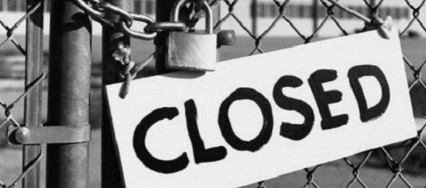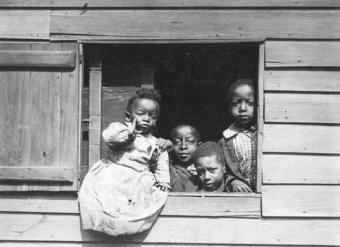A recent Capitol Hill forum on the impact of school closure held the Rayburn Congressional building demonstrated the ghastly impact of closing schools on students and communities.
The Stanford Center for Opportunity Policy in Education, and the Journey for Justice Alliance, sponsored a breakfast forum entitled “Closed for Learning: The Impact of School Closures” The forum focused on the impact of community school closures in low-income neighborhoods.
The purpose of the forum was to engage Congressional staff and key stakeholders in a discussion on the effects of these school closures on students, parents, and the community at-large. The event featured the perspectives of national advocates, community members, and students.

- Jon David Snyder, Executive Director, SCOPE
- Judith Browne-Dianis, Co-Director, Advancement Project
- Jitu Brown (moderator), National Director, Journey for Justice Alliance
- Anna Jones, Parent Leader & #FightForDyett Hunger Striker, Kenwood Oakland Community Organization
- Tanaisa Brown, Newark Student Union
- Julian Vasquez Heilig, Professor, California State University, Sacramento
- Linda Darling-Hammond (moderator), Faculty Director, SCOPE
- Julia Daniel, Doctoral Student Researcher, University of Colorado, Boulder
- Judith Browne-Dianis, Co-Director, Advancement Project
- Keron Blair, Director, The Alliance to Reclaim Our Schools
We explored how Congress and federal agencies can promote alternatives to school closings that will improve student learning and support students, educators, and families in communities across the country.
My remarks focused on reviewing school closure evidence. You can watch the presentation on YouTube here:
Massive school closure is a relatively new educational policy approach. In May 2013, the Chicago Board of Education voted to close 47 elementary schools—at the time, it was the largest number of schools closed in one year by any district in the nation.
School closure has become a highly contentious issue in our society. School boards— often politically appointed and sometimes elected— have recently focused on a variety of top-down policies such as school closure.
 We have even come to the point where discussions have occurred that would essentially close entire districts and turn them over to top-down, private control— similar to New Orleans. Dallas and more recently Los Angeles have considered this option.
We have even come to the point where discussions have occurred that would essentially close entire districts and turn them over to top-down, private control— similar to New Orleans. Dallas and more recently Los Angeles have considered this option.
Proponents of school closure argue that students should receive relief from low-performing schools. But it is still an open question whether school closure does what its proponents purport it to do.
I’d like to walk you through some of the more prominent research and data on school closure. I will discuss research from some of the most well-known school closure locales: New Orleans, Chicago, New York and Michigan. I will also briefly talk about research from lesser discussed school closure in Ohio and North Carolina.
I’ll begin with the minority of research that purports that there are SOME benefits of school closure.
A Journal of Public Economics study focusing only on test scores in Michigan found that achievement of displaced students improved if the closed school is low-performing. However, the study also found that students in receiving schools “suffered” academically due to the influx of students.
A Fordham Foundation study examining Ohio school closures found that test scores marginally increased for students after their schools closed. However, the National Education Policy Center’s review of the study noted that that forty percent of students in closed Ohio schools transferred to campuses that were not higher performing. NEPC noted that the Fordham study did not separately report, or apparently control for, the academic performance of students who remained in low performing schools.
A November 2015 study of New York school closure by the New York Research Alliance found that closures had little impact on the academic outcomes of students who had attend closed schools. However, they still proffered that school closure improved graduation rates for students who would have theoretically attended the closed schools. Clearly there are too many factors to consider that could explain an increase in graduation rates for students who never even attended the closed schools.
Now for the bad news.
Research out of North Carolina showed that school closure impacts students negatively during the closure year. A study conducted by State Board of Education found that students displaced by closure experienced negative effects in the announcement year. Additionally, while 76% of student technically went to schools that were “higher” performing— only 14 percent of students transitioned to a school with a performance composite above 60 percent passing.
New Orleans and Chicago are probably THE most infamous locales where school closure has occurred en masse.
 First I’ll discuss Chicago. The problematic outcomes of school closure are readily apparent in the data from Chicago and has been fairly consistently bad news over time. For example, the Chicagoland Researchers and Advocates for Transformative Education (CReATE) found that school closures have historically had a negative impact on children’s academic performance. Analyses of school closures in Chicago reveal that 94% of students from closed CPS schools did not go on to “academically strong” new schools. School closures have not historically resulted in the savings predicted by school officials. Closure-related costs have consistently been underestimated or understated by officials. School closures have exacerbated racial inequalities and segregation in Chicago. Approximately 90% of the school closings have impacted predominately African American communities according to CReATE’s data.
First I’ll discuss Chicago. The problematic outcomes of school closure are readily apparent in the data from Chicago and has been fairly consistently bad news over time. For example, the Chicagoland Researchers and Advocates for Transformative Education (CReATE) found that school closures have historically had a negative impact on children’s academic performance. Analyses of school closures in Chicago reveal that 94% of students from closed CPS schools did not go on to “academically strong” new schools. School closures have not historically resulted in the savings predicted by school officials. Closure-related costs have consistently been underestimated or understated by officials. School closures have exacerbated racial inequalities and segregation in Chicago. Approximately 90% of the school closings have impacted predominately African American communities according to CReATE’s data.
Then there is Louisiana. The locale where top-down education reformers pressed for widespread school closures after Katrina.
Have school closures spurred an education miracle 10 years after the storm?
In a recent policy brief that I authored and was released by the Network for Public Education (See the post Education reform crescendo at #Katrina10), I collected publicly available data from state and federal sources. These data show that Louisiana and the RSD are last in nearly last in nearly all educational outcomes. More than 10 years after school closure and choice arrived in New Orleans— the results from top-down reform are dismal.
Mercedes Schneider, a Louisiana teacher and blogger reported that in the summer 2013, parents were required to “choose” from almost all D and F schools when they completed the Walton Foundation-funded OneApp open enrollment form. The RSD had no A schools and only a few B schools in 2012-13. (See also the post Colonizing the Black Natives: Reflections from a former NOLA Charter School Dean of Students).
Currently, the RSD still has no A schools and only a handful of B schools.
While the Orleans Parish has mostly A and B schools (some charter, some not), the OPSB is quite small when compared to RSD. Also, many of its schools use selective admissions processes, and some of the preferable schools often had additional application criteria beyond One App as a way of pre-screening applicants.
So essentially the New Orleans school closure model has created a market tiering of schools, like wine or ice cream aisle in a grocery store, where you can afford or get access to certain wines but maybe not others because you may not have the capitol to access or purchase the products. In the case of New Orleans, the capital for families and students is transportation, test scores and other admissions requirements.
Essentially school closure has created market segmentation in New Orleans…. where only certain students with various forms of capital can gain access to high-quality schools.
New Orleans parents, such as Karran Royal Harper, have discussed this market tiering extensively— for a decade, parents and students have only been offered mostly-low-graded school options for their children. Only a select few students gain access to the top of the market tier through selective and burdensome application process that many non-low performing schools require.
Mercedes Schneider has written that most NOLA students of color— if they remain in school— and that is a big if considering that the RSD is still last or nearly last in all student outcomes such as dropout and graduation— are essentially just shuffled from low-graded charter school to low-graded charter school.
In conclusion,
Research and data should inform our discussion about school closure. The predominance of the currently available research demonstrates that there is decreased student achievement, increased racial inequality, and parents of color still don’t have access to properly resourced high-quality neighborhood schools.
As a result, it seems clear that the data suggests we consider alternatives to the top-down school closures approach for reforming schools. There is scant evidence in the research literature that supports top-down school closure policies. I believe this is largely because school closure has been— as Jitu Brown said in his opening— a shell game that does not directly address the needs of students or the communities that they live in.
Therefore, it is incumbent upon us to think about community-based solutions that don’t ignore the needs that students bring to schools and the severe resource inequities that still plague in schools located in communities of color. It is my hope that the re-authorization of ESEA that will be signed today will provide momentum for a slate of community-based, democratically controlled approaches to education reform. I look forward to hearing more about community schools as one of the community-based alternatives to the recent decade of top-down reform in the next panel.
Also check out some of Cloaking Inequity’s previous posts about school closure.
- Parents risk dying for Dyett and neighborhood public schools #FightforDyett #WeSupportDyett12
- Hunger strike for community-based public schools #FightForDyett
- The Teat: The Bloomberg Blues— A Starved Cow on Purpose
- Mouth agape: What the data tell us about school closure in Chicago
- School Closure and Race Infographic: Something fishy going on in Chicago?
Please Facebook Like, Tweet, etc below and/or reblog to share this discussion with others.
Want to know about Cloaking Inequity’s freshly pressed conversations about educational policy? Click the “Follow blog by email” button on the home page.
Twitter: @ProfessorJVH
Click here for Vitae.

11 thoughts on “Ghastly Impact of Closing Schools on Students and Communities”